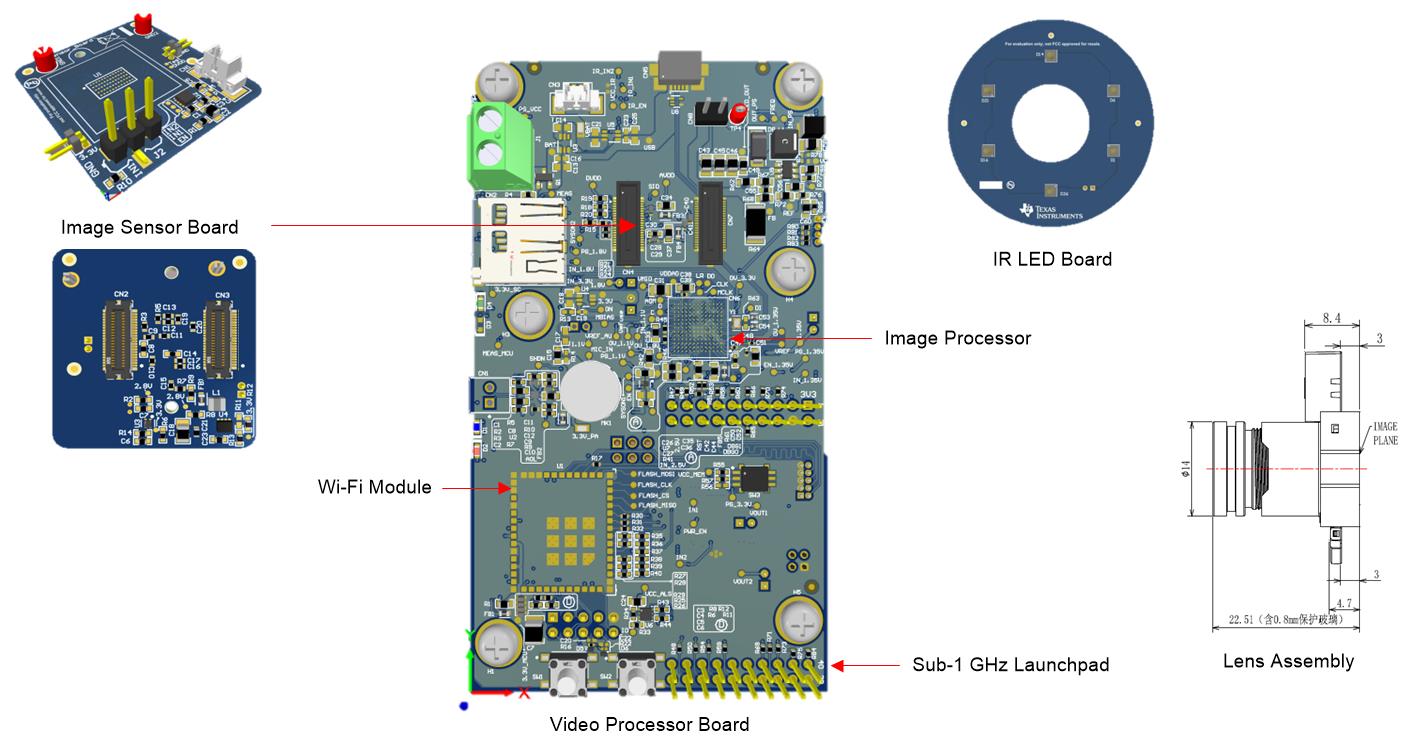TIDUEZ4 May 2021
- Description
- Resources
- Features
- Applications
- 5
- 1System Description
-
2System Overview
- 2.1 Block Diagram
- 2.2 Highlighted Products
- 2.3 Design Considerations
- 3Hardware, Software, Testing Requirements, and Test Results
- 4Design and Documentation Support
- 5About the Author
1 System Description
| PARAMETER | SPECIFICATIONS | |
|---|---|---|
| Capture and streaming quality | Video | 2 MP, 1080p at 48 FPS (1920 × 1080) |
| Audio | Analog microphone input Mono speaker output | |
| Supported wireless networks | 802.11 a, b, g, and n: 2.4 GHz and 5 GHz Multiprotocol sub-1 and 2.4 GHz wireless | |
| Featured protocols | RTP and RTSP | |
| Power | Battery | Input range: 2.4 V to 5.5 V Recommended battery types: 3.7 V Li-ion 1.5 V Alkaline (2S, 3S) 1.2 V NiMH (3S, 4S) Battery pack (SY634-F031-ND) |
| USB | 5.0 V (Micro USB 2.0) | |
| Battery life | 1.5 years (6000 mAH at 25 s video and 10 s IR LED illumination per day) | |
| Sensing | Pyro (PIR) detection: external sensor Ambient light sensing with IR rejection | |
| Lens | Size | 1/2.7 inch |
| Resolution | 1920 × 1080 (HD) | |
| Field of view | 90.84° | |
| Focal-length | 3.8 mm | |
| Features | Supports focus, iris, and integrates IR cut filter | |
| Day or night vision | IR LED driver (illumination) | Supports 6-series LEDs with IF = 1 A, 500 mW/sr radiant intensity, and VF = 1.7 V |
| Motorized IR-cut filter | 22 Ω coil resistance, 3.3 V drive | |
Camera activation | Configurable: PIR, network, doorbell | |
| Operating temperature | –30°C to 60°C | |
Many wireless network cameras or video doorbells are designed to operate in locations where power cables might not be accessible. Those locations include the front door, high in the ceiling, top of the doors, a tree in the garden, or others. The goal is to mount the camera at any location without the need to install power cables. Since the camera is battery powered and is mounted on locations which are not easily accessible to replace the batteries, it is highly important to have very efficient power solutions to get the maximum possible battery life.
This reference design provides a solution for a battery-operated wireless camera by combining industry-leading image processing, connectivity, sensor, and power solutions. Highly efficient power converters along with optimized system architecture help to increase the battery life. The image processor together with a Wi-Fi® connectivity device enables secured high-quality live video streaming and two-way audio streaming with noise reduction and echo cancellation. It provides day and night vision capabilities by integrating ambient light sensing as well as efficient IR LED driver and motorized IR cut filter.
This reference design solution enables developers to quickly design their end applications for high-performance wireless battery-operated cameras while optimizing overall system power for longer battery life.
 Figure 1-1 Reference Design Board – PCB
Figure 1-1 Reference Design Board – PCB